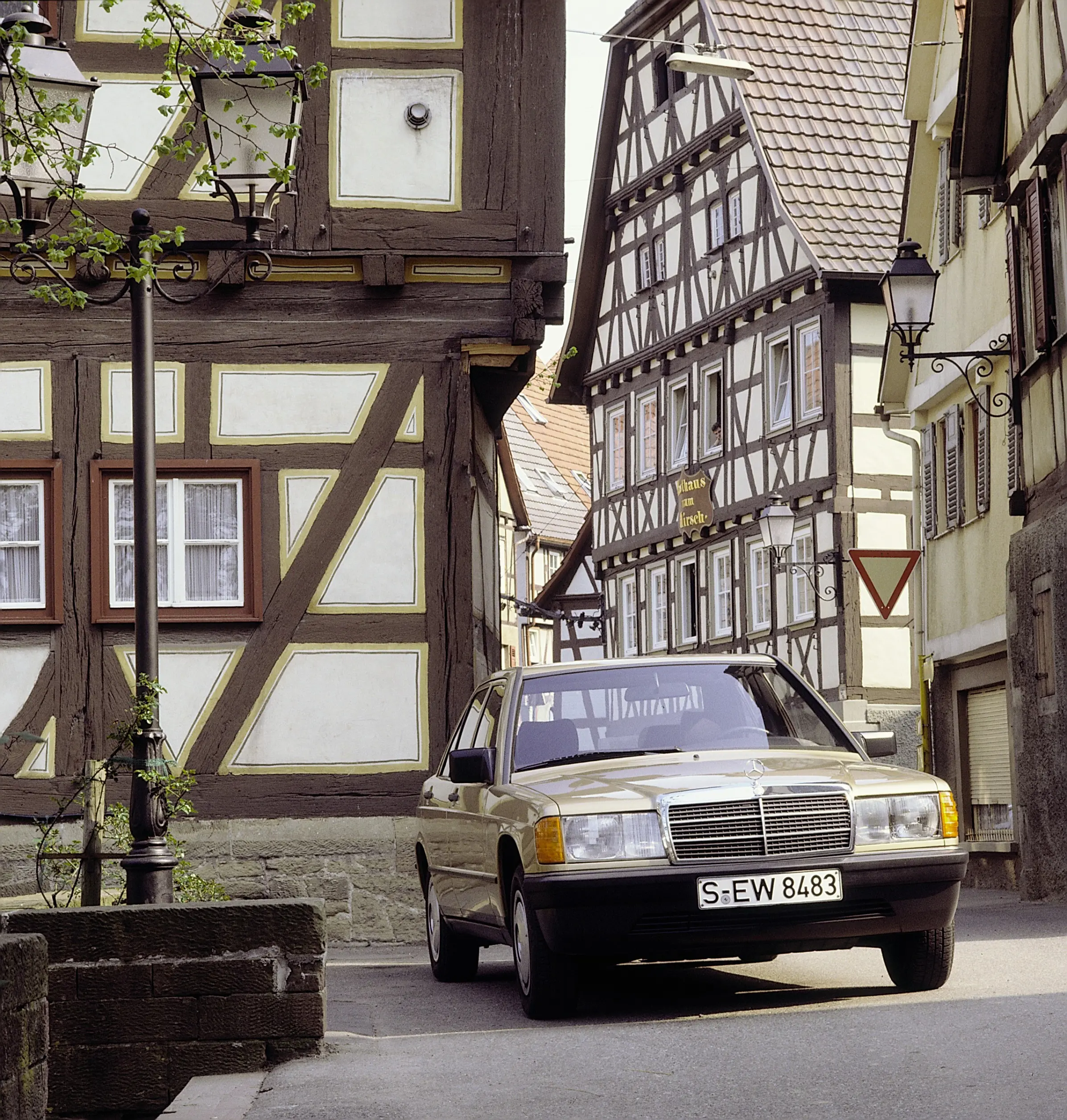THE MERCEDES-BENZ W201 AT FORTY
13 December 2022
It is almost impossible to believe the W201 celebrated its 40th birthday on the 8th December. Some cars have styling that appears locked in 1982, while Bruno Sacco's lines for the original 190 is timelessly elegant. It was also a crucial Mercedes-Benz alternative to the BMW 3-Series and the Audi 80.
M-B commended work on the W201 project in 1974 and the development department clearly stated its aim was
not to penetrate the medium-size-category markets, which have been occupied by brands such as Opel and Ford for many years. Moreover, the 201 model is to be deliberately distinct from these due to the trademark characteristics customers expect in terms of quality, safety and refinement.

In reality, the W201 did tempt ambitious owners of the Ascona, as well as Audi and BMW drivers. When the 190 debuted in 1982, many potential customers were impressed by its looks and the fact it was first production car with a multi-link suspension.
British sales began in September 1983, and Mercedes-Benz UK initially offered the 190 and the fuel-injected 190E, both with five-speed transmission as standard. Power was from the four-cylinder 1,997cc unit first seen in the W123-series 200. The motoring writer Mike Cotton thought:
The 190 carburettor model competes quite well in the 2-litre executive class on price, at £9,685 not far apart from the BMW 320i, the Peugeot 505 GTI and the Ford Sierra XR4i. It has to be said though that the 190 is a sedate performer and would have a totally different appeal, the 190E model starting at £10,640 being the one a keen driver would consider.
However, in 1983 this was a considerable sum of money; an Audi 100CD cost only £356 more. The buyer might also have looked at the BMW 320i four-door for £8,845 or the Alfa Romeo Alfetta 2.0 for £8,995. Nor was the W201 especially well appointed, with headlamp wipers & washers costing another £207 and a sliding roof an additional £506. As for a Becker radio/cassette with power-operated aerial and electric windows, these options cost £515 and £516, respectively.
But while Autocar moaned about the 190E's accommodation, they hailed its "performance, efficiency and road behaviour" and found the asking price "tolerably competitive". Across the Atlantic, Car and Driver seemed quite mesmerised:
Suddenly I was back in Mercedes land. This wasn't a new automobile so much as a perfect seven-eighths-scale model of the acclaimed S-class cars. All the trappings were in place: the matte-black steering wheel big enough for a bus driver, the traditional Mercedes instruments, the burnished panel of exotic zebrawood, the zany array of climate controls. Yes, this was a mad scientist's dream come true. A miniature Mercedes-Benz.
When Motor tested the 190E opposite the 320i and the Saab 900 GLi in 1984, the price was now £11,170. This was nearly £1,500 more than the BMW and almost £2,500 more than its Swedish rival. The writer believed the W201 was "too expensive for what it offers" yet was "a remarkably good car". It also apparently possessed a social cachet lacking in its Munich competitor, an observation that must have pleased Stuttgart's management.
By then, Mercedes-Benz had expanded the range, launching two new versions in 1983 – the diesel-engine 190D and the 190 E 2.3-16V, with a Cosworth-developed cylinder head and a top speed of 143 mph. The latter anticipated future generations of sporting W201s, but for now, let us pay tribute to the original 190. Many owners would agree that it was indeed "Engineered like no other car in the world" -
